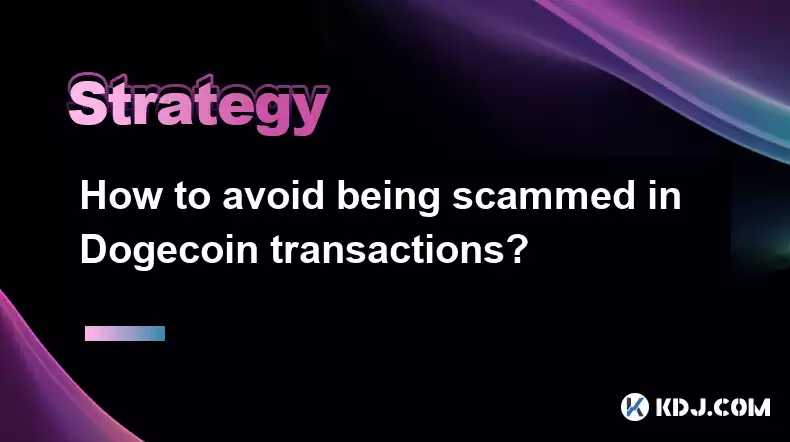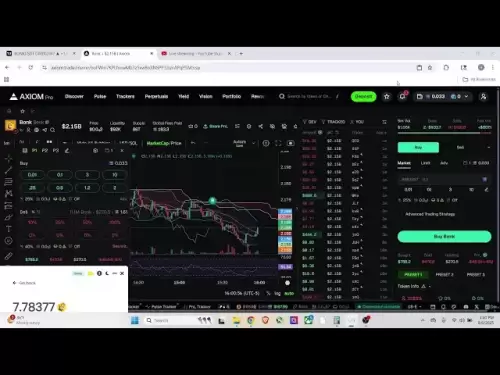-
 Bitcoin
Bitcoin $116700
2.16% -
 Ethereum
Ethereum $3830
5.76% -
 XRP
XRP $3.082
4.56% -
 Tether USDt
Tether USDt $1.000
0.04% -
 BNB
BNB $777.8
1.96% -
 Solana
Solana $173.2
5.46% -
 USDC
USDC $0.0000
0.02% -
 Dogecoin
Dogecoin $0.2146
6.85% -
 TRON
TRON $0.3384
0.92% -
 Cardano
Cardano $0.7676
5.51% -
 Hyperliquid
Hyperliquid $39.28
4.90% -
 Sui
Sui $3.723
9.07% -
 Stellar
Stellar $0.4164
6.32% -
 Chainlink
Chainlink $17.36
5.78% -
 Bitcoin Cash
Bitcoin Cash $580.9
3.62% -
 Hedera
Hedera $0.2544
5.50% -
 Ethena USDe
Ethena USDe $1.001
0.02% -
 Avalanche
Avalanche $22.81
3.81% -
 Litecoin
Litecoin $120.8
3.60% -
 UNUS SED LEO
UNUS SED LEO $8.956
-0.35% -
 Toncoin
Toncoin $3.311
4.28% -
 Shiba Inu
Shiba Inu $0.00001266
4.15% -
 Uniswap
Uniswap $10.10
5.97% -
 Polkadot
Polkadot $3.786
4.80% -
 Dai
Dai $1.000
0.01% -
 Monero
Monero $280.4
-4.02% -
 Bitget Token
Bitget Token $4.405
1.69% -
 Cronos
Cronos $0.1480
5.13% -
 Pepe
Pepe $0.00001087
5.67% -
 Ethena
Ethena $0.6348
11.62%
How to avoid being scammed in Dogecoin transactions?
To protect your Dogecoin, never share private keys, verify URLs to avoid phishing, and be wary of fake giveaways; always use official sources to confirm legitimacy.
Apr 20, 2025 at 06:36 am

Understanding Dogecoin Scams
Dogecoin, a popular cryptocurrency known for its friendly Shiba Inu mascot, has attracted a large community of users. However, with its increasing popularity, the risk of scams has also risen. Understanding the common types of Dogecoin scams is crucial for protecting your investments. Scammers often use sophisticated techniques to deceive users, ranging from fake giveaways to phishing websites. By educating yourself about these threats, you can significantly reduce the likelihood of falling victim to a scam.
Identifying Phishing Attempts
One of the most common scams in the cryptocurrency world is phishing. Phishing attempts involve scammers creating fake websites or emails that mimic legitimate platforms to steal your private keys or login credentials. To avoid falling into this trap, always double-check the URL of any website you visit. For instance, the official Dogecoin website is dogecoin.com. If you encounter a site with a slightly different domain, such as dogecoin.org or dogecoins.com, it could be a phishing attempt.
- Verify the URL: Ensure the website's URL matches the official site exactly.
- Check for HTTPS: Look for the padlock icon in the address bar, indicating a secure connection.
- Avoid Clicking Suspicious Links: Be cautious with links received via email or social media, especially if they promise free Dogecoin or require you to log in to your wallet.
Protecting Your Private Keys
Your private keys are the most critical piece of information in your Dogecoin wallet. If a scammer gains access to these keys, they can transfer your funds to another wallet. To protect your private keys, never share them with anyone, and store them securely. Using a hardware wallet is one of the safest methods for storing your private keys offline. Hardware wallets like Ledger or Trezor provide an additional layer of security by keeping your keys isolated from internet-connected devices.
- Never Share Your Private Keys: Keep them confidential and do not disclose them to anyone.
- Use a Hardware Wallet: Invest in a hardware wallet to store your keys offline.
- Enable Two-Factor Authentication (2FA): Add an extra layer of security to your wallet by enabling 2FA wherever possible.
Avoiding Fake Giveaways and Airdrops
Scammers often lure users with the promise of free Dogecoin through fake giveaways and airdrops. These scams typically require you to send a small amount of Dogecoin to a specific address or to share personal information to receive the "free" coins. Remember, if an offer sounds too good to be true, it probably is. Always verify the legitimacy of any giveaway or airdrop through official channels, such as the Dogecoin subreddit or the official Dogecoin Twitter account.
- Research Before Participating: Check official sources to confirm the authenticity of any giveaway or airdrop.
- Be Wary of Unsolicited Offers: Do not engage with unsolicited messages or emails promising free Dogecoin.
- Use Trusted Platforms: Only participate in promotions or giveaways hosted on reputable platforms.
Safeguarding Against Social Engineering
Social engineering is another tactic used by scammers to manipulate users into divulging sensitive information. This can include impersonating a trusted individual or organization to gain your trust. To protect yourself, always verify the identity of the person you are communicating with, especially if they are asking for personal or financial information. Be cautious of anyone who contacts you out of the blue, claiming to be from a cryptocurrency exchange or wallet provider.
- Verify Identities: Use official contact information to verify the identity of anyone reaching out to you.
- Be Skeptical of Urgency: Scammers often create a sense of urgency to pressure you into making quick decisions. Take your time to verify information.
- Educate Yourself: Stay informed about the latest scams and tactics used by fraudsters in the cryptocurrency space.
Frequently Asked Questions
Q: Can I recover my Dogecoin if I fall victim to a scam?
A: Recovering stolen Dogecoin can be challenging and is not always possible. If you suspect you've been scammed, report the incident to the relevant authorities and the platform where the scam occurred. Some exchanges and wallet providers may offer assistance or have insurance policies to help recover lost funds, but success is not guaranteed.
Q: Are there any tools or services that can help protect me from Dogecoin scams?
A: Yes, there are several tools and services designed to enhance your security. Blockchain explorers like BlockCypher can help you verify transaction details, while scam alert services like CryptoScamDB provide real-time information on known scams. Additionally, using anti-phishing browser extensions can add an extra layer of protection against malicious websites.
Q: How can I report a Dogecoin scam?
A: If you encounter a Dogecoin scam, you should report it to multiple sources to increase the chances of action being taken. Report the scam to the Dogecoin community on platforms like Reddit or Twitter, submit a report to the Federal Trade Commission (FTC) if you are in the U.S., and inform your local law enforcement agency. Additionally, if the scam occurred on a specific platform or exchange, report it to their support team.
Q: Is it safe to buy Dogecoin from online exchanges?
A: Buying Dogecoin from reputable online exchanges can be safe if you take the necessary precautions. Choose well-established exchanges with strong security measures, enable 2FA on your account, and only transfer funds to verified addresses. Always research the exchange's reputation and security practices before making a purchase.
Disclaimer:info@kdj.com
The information provided is not trading advice. kdj.com does not assume any responsibility for any investments made based on the information provided in this article. Cryptocurrencies are highly volatile and it is highly recommended that you invest with caution after thorough research!
If you believe that the content used on this website infringes your copyright, please contact us immediately (info@kdj.com) and we will delete it promptly.
- Ollama Turbo & GPT-OSS: Revolutionizing AI Model Accessibility and Speed
- 2025-08-07 20:29:33
- Bitcoin Ordinals: NFTs Evolving Bitcoin or a Fleeting Fad?
- 2025-08-07 20:29:33
- BlockchainFX, Bitcoin Swift, Crypto Presales: What's the Hype?
- 2025-08-07 19:10:13
- Pepe Dollar (PEPD) vs. SPX6900: The Meme Coin Battle of 2025
- 2025-08-07 19:50:12
- XRP Investment Regret: Are You Missing Out on the Next Big Thing?
- 2025-08-07 19:50:12
- XRPINU: More Than Just a Meme? Roadmap, Liquidity, and the Future of Funny Money
- 2025-08-07 19:56:46
Related knowledge

How to avoid common crypto investment mistakes?
Jul 13,2025 at 01:35am
Understanding the Risks of Crypto InvestmentInvesting in cryptocurrency can be highly rewarding, but it also comes with significant risks. One of the ...

What is a long-short crypto strategy?
Jul 15,2025 at 10:56am
Understanding the Basics of a Long-Short Crypto StrategyA long-short crypto strategy is an investment approach where traders simultaneously take long ...

What is a long-short crypto strategy?
Jul 11,2025 at 01:28pm
Understanding the Basics of Long-Short Crypto StrategyA long-short crypto strategy is an investment approach where traders take both long and short po...

How to use the RSI indicator for crypto?
Jul 12,2025 at 03:56pm
Understanding the RSI Indicator in Cryptocurrency TradingThe Relative Strength Index (RSI) is a momentum oscillator used to measure the speed and chan...

Is copy trading a good strategy for crypto beginners?
Jul 12,2025 at 08:28am
Understanding Copy Trading in the Cryptocurrency MarketCopy trading is a strategy where novice traders replicate the trades of experienced investors a...

How to build a crypto portfolio with $1000?
Jul 13,2025 at 08:14pm
Understanding the Basics of Cryptocurrency InvestmentBuilding a crypto portfolio with $1000 starts with understanding the fundamentals of cryptocurren...

How to avoid common crypto investment mistakes?
Jul 13,2025 at 01:35am
Understanding the Risks of Crypto InvestmentInvesting in cryptocurrency can be highly rewarding, but it also comes with significant risks. One of the ...

What is a long-short crypto strategy?
Jul 15,2025 at 10:56am
Understanding the Basics of a Long-Short Crypto StrategyA long-short crypto strategy is an investment approach where traders simultaneously take long ...

What is a long-short crypto strategy?
Jul 11,2025 at 01:28pm
Understanding the Basics of Long-Short Crypto StrategyA long-short crypto strategy is an investment approach where traders take both long and short po...

How to use the RSI indicator for crypto?
Jul 12,2025 at 03:56pm
Understanding the RSI Indicator in Cryptocurrency TradingThe Relative Strength Index (RSI) is a momentum oscillator used to measure the speed and chan...

Is copy trading a good strategy for crypto beginners?
Jul 12,2025 at 08:28am
Understanding Copy Trading in the Cryptocurrency MarketCopy trading is a strategy where novice traders replicate the trades of experienced investors a...

How to build a crypto portfolio with $1000?
Jul 13,2025 at 08:14pm
Understanding the Basics of Cryptocurrency InvestmentBuilding a crypto portfolio with $1000 starts with understanding the fundamentals of cryptocurren...
See all articles

























































































